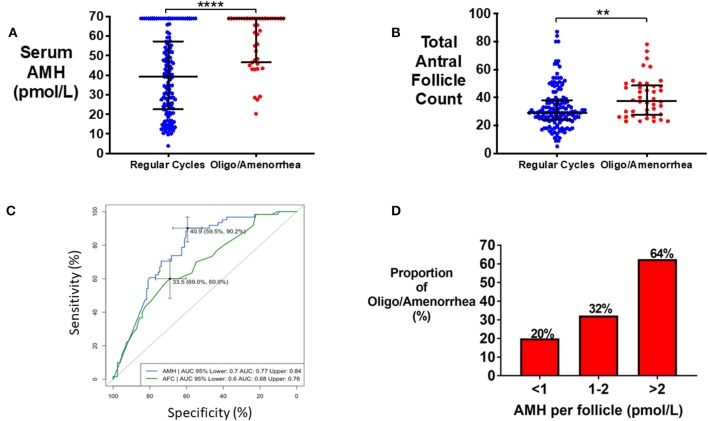Figure 4.
(A) Scattergram (median ± IQR) of serum AMH (pmol/L) in eumenorrheic women and in women with oligo/amenorrhea. Groups were compared by the Mann-Whitney U test. Women with oligomenorrhea/amenorrhea had statistically significant higher serum AMH. ****P < 0.0001. (B) Scattergram (median ± IQR) of total AFC in eumenorrheic women and in women with oligo/amenorrhea. Groups were compared by the Mann-Whitney test. Women with oligo/amenorrhea had higher AFC than eumenorrheic women. **P < 0.01. (C) Receiver Operating Characteristic (ROC) curves for the prediction of oligo/amenorrhea using serum AMH (pmol/L) and AFC. (D) Frequency of oligomenorrhea increased with category of AMH per antral follicle (serum AMH value divided by total antral follicle count) when compared by univariate logistic regression (P = 0.001). The odds of oligomenorrhea was increased by 1.9-fold (95% CI 0.9–4.1) in those with AMH per antral follicle 1–2 pmol/L, and 6.7-fold (95% CI 2.5–19.9) in those with AMH per antral follicle >2 pmol/L compared to those with an AMH per antral follicle <1 pmol/L.

